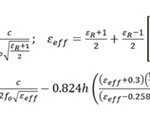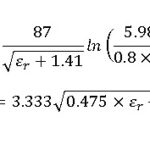
What is TM3 and TM4 in LTE?
In the context of LTE (Long-Term Evolution) systems, TM3 (Transmission Mode 3) and TM4 (Transmission Mode 4) refer to specific transmission modes that define how data is transmitted over the radio interface between the User Equipment (UE) and the Evolved NodeB (eNodeB). These transmission modes are part of the broader set of transmission modes that LTE uses to support varying network conditions and application requirements. The choice of transmission mode has a significant impact on the performance of the LTE network, including aspects such as throughput, latency, reliability, and coverage.
Transmission modes in LTE are designed to optimize radio communication depending on the user’s location, mobility, and the type of data being transmitted. TM3 and TM4 are specifically associated with advanced techniques in MIMO (Multiple Input Multiple Output) technology, which is one of the key innovations in LTE that enhances capacity and coverage in mobile networks. MIMO uses multiple antennas at both the transmitter and receiver to transmit more than one data signal simultaneously, thereby increasing the available bandwidth and improving the quality of the communication link.
Transmission Mode 3 (TM3) in LTE
Transmission Mode 3 (TM3) is a transmission mode that utilizes a 2×2 MIMO configuration, where two antennas are used at both the UE (User Equipment) and the eNodeB (evolved NodeB). This configuration allows for two streams of data to be transmitted simultaneously over separate spatial paths, enhancing the overall data throughput compared to single antenna configurations. It is particularly beneficial in scenarios where the wireless channel conditions allow for spatial diversity, such as in environments with good signal quality and limited interference.
In TM3, the LTE system uses a spatial multiplexing technique. Spatial multiplexing involves splitting the data into multiple streams, which are transmitted simultaneously over the multiple antenna paths. The key advantage of TM3 is its ability to increase the overall capacity of the system without requiring additional spectrum. This results in better throughput, especially in environments where multiple data streams can be transmitted efficiently.
The operation of TM3 is dependent on the channel quality, and it requires the support of both the UE and eNodeB. The MIMO techniques used in TM3 rely on the availability of good channel conditions to maximize the spatial diversity gain. If the channel conditions are poor or there is significant interference, the system may fall back to a lower transmission mode, such as TM1 or TM2, which do not use MIMO techniques. As a result, TM3 is typically employed in scenarios where the user is located in areas with strong signal coverage and minimal interference.
Transmission Mode 4 (TM4) in LTE
Transmission Mode 4 (TM4) is another advanced transmission mode in LTE, and it also utilizes a 2×2 MIMO configuration. However, unlike TM3, TM4 specifically uses a technique known as closed-loop spatial multiplexing. In TM4, both the UE and the eNodeB coordinate the transmission and reception of multiple data streams using feedback information from the UE, such as Channel State Information (CSI). This feedback mechanism allows the system to dynamically adjust the transmission strategy based on the real-time channel conditions, improving the robustness of the link and optimizing performance.
The closed-loop MIMO technique used in TM4 takes advantage of the feedback provided by the UE to improve the accuracy of the transmission process. By using CSI, the eNodeB can adjust its transmission parameters, such as power control and modulation, to ensure that the data is transmitted as efficiently and reliably as possible. This allows the system to maintain high data rates even in environments where interference or signal degradation might otherwise impact performance.
TM4 can also improve throughput by leveraging the spatial diversity of the MIMO system, but it does so with a higher level of adaptability compared to TM3. By incorporating feedback from the UE, TM4 can make real-time adjustments to the transmission, resulting in better handling of rapidly changing radio conditions, such as those experienced by users who are moving at high speeds or in environments with significant interference.
Differences between TM3 and TM4
While both TM3 and TM4 involve the use of 2×2 MIMO, there are important differences between the two transmission modes. These differences largely revolve around how the data streams are transmitted and the role of feedback from the UE:
- Feedback Mechanism: TM3 does not rely on feedback from the UE to adjust the transmission strategy. It uses open-loop spatial multiplexing, where the eNodeB simply transmits data streams without real-time adjustments based on the channel conditions. In contrast, TM4 utilizes closed-loop spatial multiplexing, where the UE provides feedback that allows the eNodeB to adjust its transmission based on the actual channel conditions.
- Adaptability: TM4 is more adaptable to varying channel conditions, as it can dynamically adjust the transmission parameters based on the real-time feedback from the UE. This results in better performance in environments with high interference or rapidly changing radio conditions. On the other hand, TM3 is less flexible in this regard, as it does not incorporate feedback and may not perform as well in less ideal conditions.
- Throughput and Performance: While both TM3 and TM4 provide a boost in throughput over single-antenna configurations, TM4 has the potential to achieve higher data rates and more stable connections in challenging environments due to its use of closed-loop feedback. This makes TM4 particularly useful in situations where users are experiencing varying signal quality or moving between different environments.
Usage of TM3 and TM4 in LTE Networks
Both TM3 and TM4 are used to enhance the performance of LTE networks, particularly in scenarios where higher throughput is required, such as in urban areas with dense traffic or in environments with high mobility. However, the use of these transmission modes is contingent on the channel conditions and the capabilities of both the UE and the eNodeB.
TM3 is commonly used in relatively stable environments where the channel conditions allow for spatial multiplexing to be effective. It is particularly well-suited for fixed or low-mobility scenarios, where the user is not experiencing rapid changes in signal quality. In contrast, TM4 is typically used in more dynamic environments, where the UE might be moving at high speeds or where interference and signal degradation are more prevalent. The closed-loop nature of TM4 allows it to adapt to these changes in real time, making it more robust in challenging radio environments.
In practice, LTE networks are designed to choose the most appropriate transmission mode based on the real-time conditions and the capabilities of the UE. If the system detects that the channel conditions are good and the UE supports the necessary MIMO configurations, TM3 or TM4 may be selected to improve throughput. However, if the conditions deteriorate or the UE does not support advanced MIMO techniques, the network may fall back to simpler transmission modes, such as TM1 or TM2, which are based on single antenna configurations.
Impact on Network Efficiency and User Experience
The choice of transmission mode has a significant impact on both network efficiency and user experience. By using TM3 or TM4, LTE networks can achieve higher throughput, which translates into faster download and upload speeds for users. These modes also help to optimize the use of the available spectrum, increasing network capacity and reducing congestion in high-demand areas.
For users, the use of advanced transmission modes like TM3 and TM4 leads to an improved experience, particularly in scenarios that require high-speed data transfer, such as video streaming, online gaming, or large file downloads. The enhanced throughput provided by these transmission modes allows users to enjoy faster and more reliable connections, even in areas with high traffic or challenging environmental conditions.
Transmission Modes 3 (TM3) and 4 (TM4) in LTE represent advanced MIMO configurations designed to enhance the performance of mobile networks. Both modes use 2×2 MIMO technology to increase throughput, but they differ in how they utilize feedback and adjust the transmission parameters based on channel conditions. TM3 relies on open-loop spatial multiplexing, while TM4 uses closed-loop spatial multiplexing with feedback from the UE to optimize the transmission process. While TM3 is suitable for relatively stable environments, TM4 is better suited for dynamic and challenging conditions, providing higher adaptability and better performance in those scenarios. Together, these transmission modes enable LTE networks to deliver high-speed, reliable data services to users across a variety of environments.

